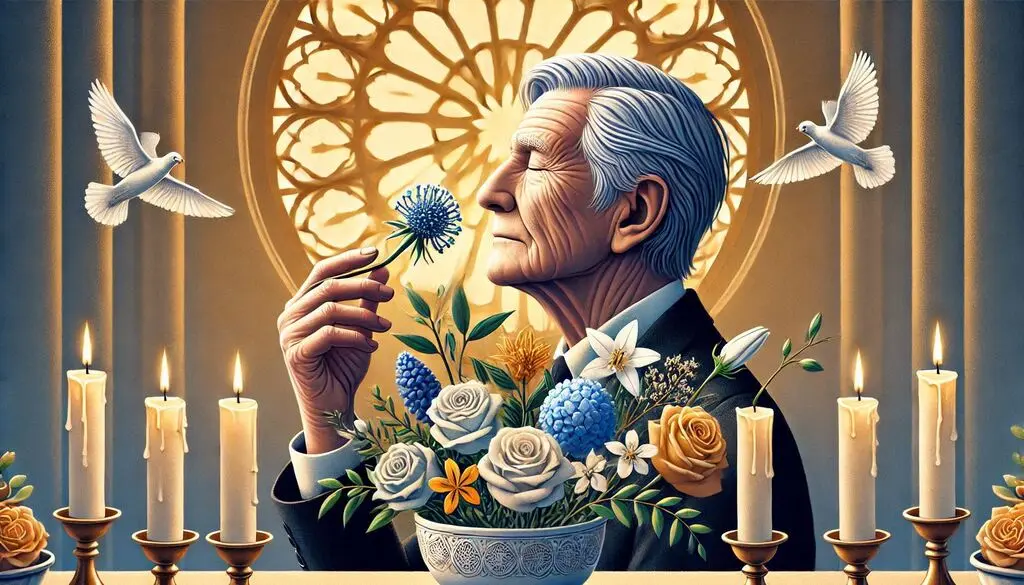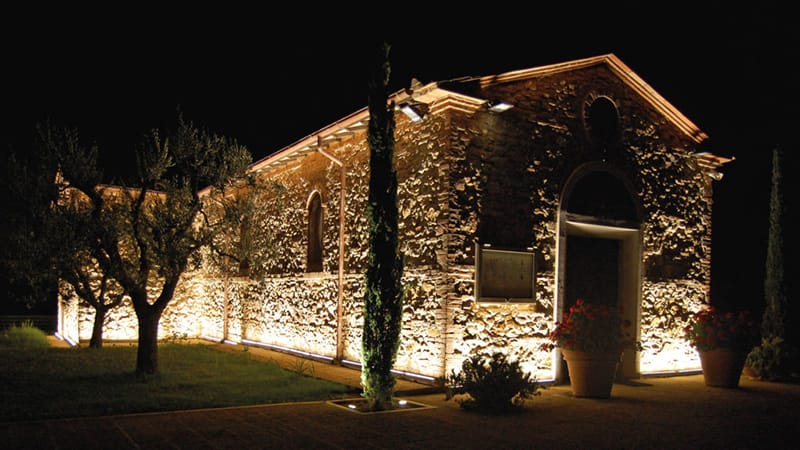Choosing flowers for a funeral is a deeply personal and meaningful gesture, with different blooms conveying various sentiments of love, remembrance, and respect. Traditional choices like lilies, roses, and carnations remain popular for their symbolism and longevity, while more unique options such as orchids and hydrangeas can offer comfort and lasting tributes to the deceased. Your funeral director can advise you on the various options, but let’s consider the meaning behind them in this article.
Symbolism of White Lilies
White lilies hold profound symbolism in funeral settings, representing purity, innocence, and the rebirth of the soul. Their association with funerals dates back to ancient Greek and Roman times, symbolizing peace and the transience of life. In Christian traditions, white lilies are linked to the resurrection of Christ, making them particularly meaningful in faith-based services.
White lilies symbolize:
- Purity and innocence
- Peace and serenity
- Rebirth of the soul
- Eternal life (Oriental lilies)
- Resurrection (Calla lilies in Christian contexts)
The pure white color and delicate fragrance of lilies make them a popular choice for creating serene and beautiful funeral arrangements, offering comfort to the bereaved while honoring the deceased.
Meaning Behind Pink Carnations
Pink carnations hold a special place in floral symbolism, representing gratitude, love, and remembrance. Traditionally associated with Mother’s Day, these flowers convey a sense of gentle affection and appreciation. Light pink carnations symbolize a mother’s undying love and are often given to express gratitude. Dark pink varieties, on the other hand, represent tenderness and are sometimes presented on first dates to signify blooming love.
Pink carnation meanings:
- Light pink: Motherly love, gratitude, “Thank you”
- Dark pink: Fondness, tender emotions, budding romance
- Overall: “I will never forget you”
Interestingly, pink carnations have a connection to Christian legend, said to have first bloomed from the Virgin Mary’s tears as she watched Jesus carry the cross, further cementing their association with profound, protective love.
Chrysanthemums in Asian Funerals
Chrysanthemums hold significant cultural importance in Asian funerals, particularly in East Asian countries like China, Japan, and Korea. In these cultures, white and yellow chrysanthemums are traditionally associated with death, mourning, and the afterlife. Unlike their cheerful connotations in some Western cultures, chrysanthemums in Asia symbolize grief and are commonly used in funeral arrangements and as offerings at graves.
Chrysanthemum symbolism in Asian funerals:
- White chrysanthemums: Purity, grief, and mourning
- Yellow chrysanthemums: Honor and respect for the deceased
- Avoid red chrysanthemums: Associated with joy and celebration, inappropriate for funerals
- In Japan: Featured on gravestones and used in Imperial ceremonies
- In Singapore: Common in condolence stands and Buddhist funeral arrangements
It’s important to note that while chrysanthemums are widely used in Asian funeral traditions, their symbolism can vary across different cultures and religions. When sending flowers for an Asian funeral, it’s advisable to consider the specific cultural context and, when in doubt, opt for white or yellow chrysanthemums to convey respect and condolences.
Other Meaningful Blooms
Funeral flowers extend beyond the traditional lilies, carnations, and chrysanthemums. Here’s a list of other meaningful flower options for funerals, each with its own symbolism and significance:
- Roses: Versatile flowers with meanings that vary by color
- White roses: Purity and innocence
- Pink roses: Admiration and grace
- Red roses: Love and respect
- Yellow roses: Friendship and remembrance
- Orchids: Symbolize “I will always love you”
- Pink and white orchids are particularly popular for funerals
- Gladioli: Represent strength and character of the deceased
- Often used in standing sprays or large arrangements
- Hydrangeas: Symbolize heartfelt emotions
- Can be given as potted plants for lasting remembrance
- Daffodils and Tulips: Represent renewal and hope
- Bright yellow varieties are especially encouraging
- Forget-Me-Nots: Communicate that the deceased will be remembered
- Often used in smaller, more personal arrangements
- Hyacinth: Symbolizes “You’re in my prayers”
- Can be a comforting choice for religious services
- Peace Lilies: Represent peace and are often given as plants
- Suitable for both the funeral service and as a gift to the bereaved family
When selecting these flowers, consider the deceased’s personal preferences, cultural background, and the overall tone of the funeral service. It’s also important to note that some flowers, like potted hydrangeas or peace lilies, can serve as lasting tributes that the family can keep after the funeral.
Purity and Spiritual Renewal
Flowers that symbolize purity and spiritual renewal play a significant role in funeral services, offering comfort and hope to those grieving. These blooms not only beautify the space but also convey profound messages of transformation and peace.
Lilies, particularly white lilies, are paramount in representing purity and spiritual renewal. They symbolize the restoration of the departed soul to a state of innocence. In Christian traditions, lilies are associated with the Virgin Mary and the resurrection of Christ, making them especially meaningful in faith-based services. The calla lily, a variety often used in Christian funerals, embodies resurrection, holiness, and faith.
White roses, another popular choice, epitomize spirituality and purity. Their pristine petals reflect the notion of the soul’s unblemished return to a higher realm. When combined with lilies in arrangements, they create a powerful visual representation of spiritual cleansing and renewal.
The peace lily plant, while not a true lily, carries similar connotations. It symbolizes the rebirth of the departed’s soul from the complexities of the physical world to a more serene state of being. As a potted plant, it serves as a lasting reminder of this spiritual journey, offering ongoing comfort to the bereaved.
Orchids, with their elegant and long-lasting blooms, convey a message of enduring love that transcends physical boundaries. Their presence in funeral arrangements suggests that the bond between the living and the deceased continues beyond death, offering a sense of spiritual connection.
In some cultures, the chrysanthemum holds significance in representing rebirth. While it’s more commonly associated with grief in Western funerals, in some Asian traditions, it symbolizes the cycle of life and renewal. This cultural variation highlights the importance of considering the deceased’s background when selecting flowers.
Daffodils and tulips, harbingers of spring, symbolize renewal and new beginnings. Their bright, hopeful appearance can bring a sense of optimism to the somber occasion, reminding mourners of the cyclical nature of life and the potential for spiritual rejuvenation.
When arranging flowers that represent purity and spiritual renewal, white is the predominant color choice. However, soft pastels like pale pink or light blue can also be incorporated to create a serene and uplifting atmosphere. The combination of these meaningful blooms offers solace to the grieving, affirming the belief in spiritual continuity and the purity of the soul’s journey beyond life.
Summary
Choosing the right flowers for a funeral is a heartfelt way to honor the memory of a loved one and offer comfort to the bereaved. Traditional blooms like lilies, roses, and carnations carry deep symbolic meanings of purity, love, and remembrance, while unique options such as orchids, hydrangeas, and peace lilies provide lasting tributes. Cultural and religious considerations play an important role in selecting flowers, particularly for funerals with specific traditions, such as those in Asian cultures where chrysanthemums hold great significance.
Ultimately, funeral flowers not only beautify the service but also convey profound messages of respect, love, and hope. By understanding the symbolism of various blooms and considering the deceased’s preferences and cultural background, you can create a meaningful floral tribute that honors their life and brings comfort to those who mourn.
















